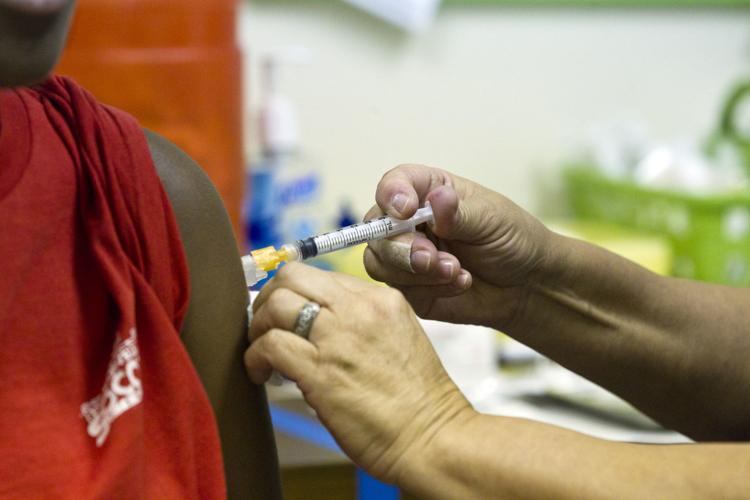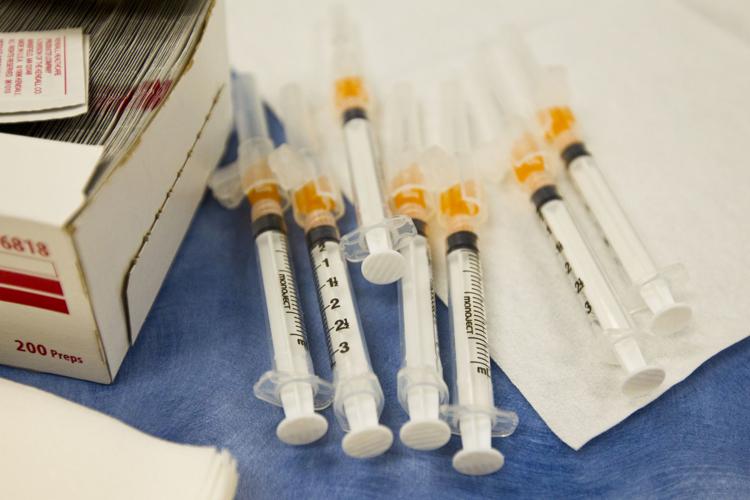Pima County health officials said focused efforts to vaccinate more children and teens against human papillomavirus have led to a trend in the right direction. As more people receive vaccinations, the more fortified the population is against the potentially cancer-causing strains of the virus.
The Centers for Disease Control and Prevention recommends all children receive the HPV vaccine to prevent against cervical, throat, vaginal, penile and anal cancers that can develop years or decades after the initial infection.
Since the first version of the vaccine gained approval for girls in 2006 and boys in 2009, about 80 percent of Pima County girls have received at least one dose. Pima County boys lag behind, at about 70 percent, said Dr. Francisco Garcia, the department’s director and chief medical officer.
Fewer Pima County children have completed the full two-dose series that is typically recommended at 11 years: 58 percent of girls and about 50 percent of boys, said Paula Mandel, the department’s deputy director.
That’s better than the state average, however. The completion rate for Arizona girls is 47 percent and 40 percent for boys, according to the Arizona Department of Health Services.
“Compared to the state, I’d say Pima County is doing pretty well,” said Dr. Karen Lewis, medical director of the Arizona Immunization Program Office of the state health department. “But there’s a long way to go to catch up with other vaccines they get at that age group. There’s still a gap.”
An “exquisitely effective” vaccine
More than 100 types of HPV strains exist. Infection spreads through intimate skin-to-skin contact during sex.
About 80 percent of people will get HPV at some point in their lives. About one in four Americans are currently infected, and about 14 million people, including teens, become infected every year, according to the Centers for Disease Control and Prevention.
The vast majority of those infected never develop symptoms and the virus typically clears within two years.
But some types of HPV cause warts, and others, if infection lingers, can cause cancer.
The HPV vaccine, according to the CDC, can prevent 90 percent of HPV-caused cancer cases.
Garcia called the vaccine “exquisitely effective,” as it is 95 percent effective and even protects against the most common strain which, if left unchecked, causes cervical cancer.
“Now we have a good primary prevention tool for these cancers and we should be using it,” Garcia said. “We should have kids vaccinated as early as possible so they have protection when they start their sexual lives.”
Changing minds
“Part of what we’ve done in Pima County is we’ve concentrated on vaccinating aggressively and age appropriately,” Garcia said.
With grant funding from the CDC, the county Health Department partnered with community health centers like El Rio Health and Marana Health Center as well as other entities to the raise vaccine awareness through education, outreach and media campaign efforts.
The number of vaccinated children has reached a level that Garcia feels optimistic about.
“The higher the number of vaccinated individuals, the less virus there is going around and the better for everyone,” said Tucson pediatrician Dr. Richard Wahl.
Moreover, the vaccine is most effective on children and teens who have not been exposed to the virus.
The average age of first dosage has fallen over time in Pima County.
The average age of the first dose is just over 12 years for girls and 13 years for boys, according to Garcia. When the vaccine was first available to girls, the average age of the first dose was 15 years old.
Today, if a child’s first dose is given after age 15, then the child must take three doses of the vaccine. Adults may also opt for the vaccine, but it will have varying degrees of effectiveness.
“If a 25 year old virgin gets the vaccine, then she will have perfect benefit. If she’s had three previous partners, she will have less so, it’s just hard to predict the degree of benefit,” Garcia said.
Garcia expects to start seeing the long-term benefits from the county’s efforts in terms of less cervical disease and others by the mid-2020s.
Garcia believes the gap in the number of vaccinated boys and girls will shrink with time, since girls had a head start.
“When it first came out, the vaccine was almost entirely aimed at females and males getting it to protect females, but it’s now clear that males benefit every bit as much as females do,” Wahl said.
Garcia’s optimistic because he believes that we’re near the point where we’ve vaccinated a large enough number to begin slowing the spread of the virus.
Mandel thinks closing the gap is a matter of continued education and awareness, especially since the vaccine is still not required by schools.
Additionally, “people think, my baby won’t be exposed ... Heaven forbid their children have sex,” Mandel said. “It’s a matter of overcoming that attitude.”
The point is to vaccinate children well before they begin engaging in sexual activity.
Wahl also added that “when the vaccine first came out, there were some concerns about possible side effects.” But, he stressed, “it turns out none were demonstrated on closer study.”
HPV vaccines are safe, according to the CDC. Common side effects are mild and can include pain, redness or swelling in the arm where the shot was given, fever, headache, tiredness, nausea, muscle or joint pain.
Lewis said the states needs to continue to encourage health-care providers to advocate for the vaccine because, ultimately, it’s preventing cancer.






